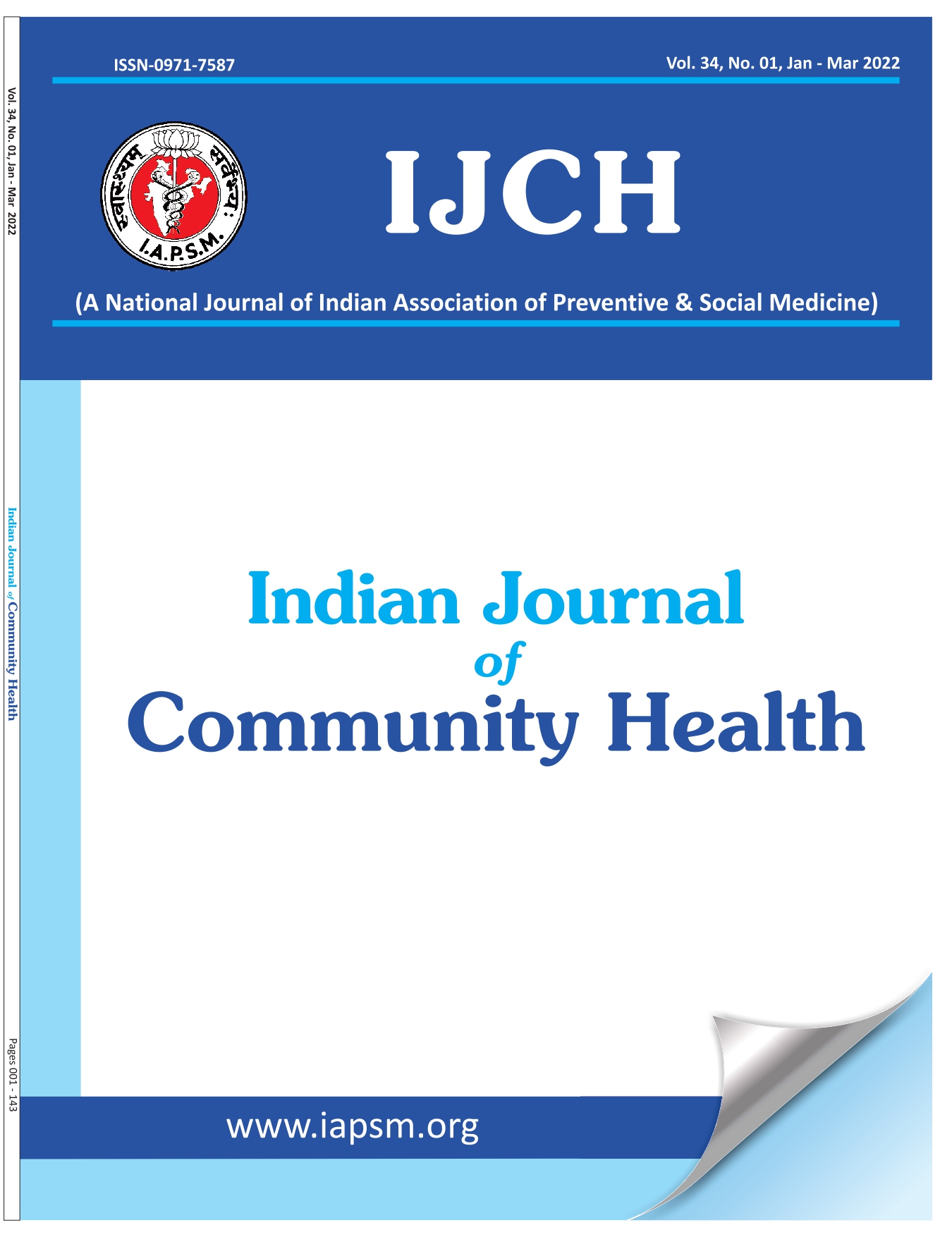An Exploratory Study to Find the Early Trend and Pattern Recognition of COVID-19 Infection in India: A Severity Model-Based Prediction
DOI:
https://doi.org/10.47203/IJCH.2021.v33i02.013Keywords:
Coronavirus Disease 2019, COVID-19, Pandemic, Modeling, Data Analysis, Exploratory Data Analysis, IndiaAbstract
Background: Recent Coronavirus Disease 2019 (COVID-19) pandemic has inflicted the whole world critically. Although India has been listed amongst the top ten highly affected countries to date, one cannot rule out COVID-19 associated complications in the near future. Aim & Objective: We aim to build the COVID-19 severity model employing logistic function which determines the inflection point and help in the prediction of the future number of confirmed cases. Methods and Material: An empirical study was performed on the COVID-19 patient status in India. We performed the study commencing from 30 January 2020 to 12 July 2020 for the analysis. Exploratory data analysis (EDA) tools and techniques were applied to establish a correlation amongst the various features. The acute stage of the disease was mapped in order to build a robust model. We collected five different datasets to execute the study. Results: We found that men were more prone to get infected with the coronavirus disease as compared to women. On 165-days based analysis, we found a trending pattern of confirmed, recovered, deceased and active cases of COVID-19 in India. The as-developed growth model provided an inflection point of 72.0 days. It also predicted the number of confirmed cases as 17,80,000.0 in the future i.e. after 12th July. A growth rate of 32.0 percent was obtained. We achieved statistically significant correlations amongst growth rate and predicted COVID-19 confirmed cases. Conclusions: This study demonstrated the effective application of EDA and analytical modeling in building a mathematical severity model for COVID-19 in India.
Downloads
References
WHO Report, Coronavirus disease 2019 (COVID-19) Situation Report – 175 (2020).https://www.who.int/docs/default-source/coronaviruse/situation-reports/20200713-covid-19-sitrep-175.pdf?sfvrsn=d6acef25_2 (Last accessed on 25.06.2021).
COVID-19 INDIA, Ministry of Health and Family Welfare Government of India https://www.mohfw.gov.in/.
“NIST/SEMATECH e-Handbook of Statistical Methods,” 2012.
A. Khan and S. Zubair, “Longitudinal Magnetic Resonance Imaging as a Potential Correlate in the Diagnosis of Alzheimer Disease: Exploratory Data Analysis,” JMIR Biomed. Eng.2020;5(1):1–13
D. C. Hoaglin et al., Understanding robust and exploratory data analysis. New York: John Wiley & Sons, 2000
A. Alimadadi, S. Aryal, I. Manandhar, P. B. Munroe, B. Joe, and X. Cheng, “Artificial Intelligence and Machine Learning to Fight COVID-19,” Physiol. Genomics, 2020;52(4):200–202
Z. Allam, G. Dey, and D. S. Jones, “Artificial Intelligence (AI) Provided Early Detection of the Coronavirus (COVID-19) in China and Will Influence Future Urban Health Policy Internationally,” Ai, 2020;1(2):156–165
Z. Yang et al., “Modified SEIR and AI prediction of the epidemics trend of COVID-19 in China under public health interventions,” J. Thorac. Dis., 2020;12(3):165–174
A. Mavragani, “Tracking COVID-19 in Europe: An Infodemiology Study,” JMIR Public Heal. Surveill.2020;6:1–13
S. M. Ayyoubzadeh, S. M. Ayyoubzadeh, H. Zahedi, M. Ahmadi, and S. R NiakanKalhori, “Predicting COVID-19 Incidence Through Analysis of Google Trends Data in Iran: Data Mining and Deep Learning Pilot Study,” JMIR Public Heal. Surveill., 2020;6(2):18828,.
Downloads
Published
How to Cite
License
Copyright (c) 2021 Indian Journal of Community Health

This work is licensed under a Creative Commons Attribution-NonCommercial-NoDerivatives 4.0 International License.





